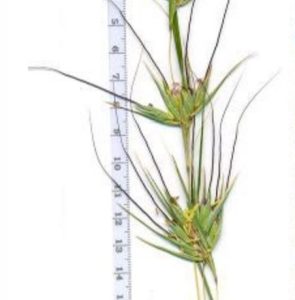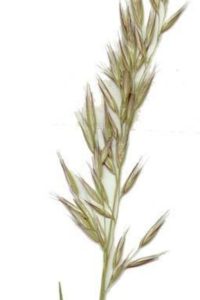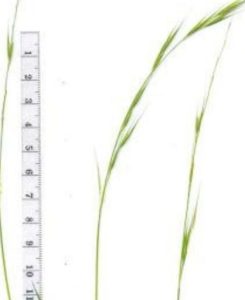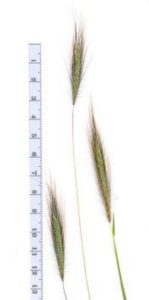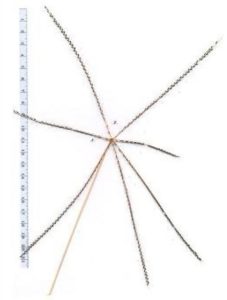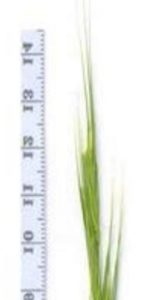NATIVE GRASSES
Native grasses have many benefits for today’s pastoralists:
- Nutrient values equivalent to introduced pasture grasses
- Perennial
- Evolved to suit the soils
- Survive droughts and heavy rains
- Need no expensive fertilisers
- Mostly frost tolerant, with some simply going dormant during frosts
- Disease tolerant
- Grow best in a pasture mix. The different species have growth periods at different times of year, providing year-round nutritious feed
- Have roots that create a dense matrix allowing rain to be absorbed into the ground
- Help prevent soil erosion
- Leach impurities from the rains allowing clean water seepage
- Control dryland salinity
- The natural flora of acid type soils
- Assist in the control of unwanted weeds
Not all native grasses are good for modern stock, but the greater majority are. Using sensible, contemporary grazing techniques, native grasses are becoming a sustainable and productive resource.
IDENTIFICATION
While exploring individual native grass species and learning to identify them, it is important to know that a native grassland is extremely diverse, with many species in its composition. A mono-culture of any one of these grasses would not be desirable. Native grasslands contain many forbs, small, non-woody, broad-leafed plants as well as wild flowers and orchids.
The images below were compiled by Sue Rahilly as part of the Perennial Stipa calendar produced in early 2008. She has relied heavily on Plants of Western NSW by Cunningham, Mulham, Milthorpe and Leigh, Inkata Press, 1992. This is considered the definitive text on NSW plants. Click on the grass names for large images. The scale on the ruler in the images is in centimetres.
KANGAROO GRASS (THEMEDA SP.)
The genus Themeda has 16 species worldwide, and 3 in Australia, distributed in all states.
Themeda australis (aka Themeda triandra), commonly known as kangaroo grass, is a densely tufted perennial, summer-grwoing grass with a very distinctive seed head. It produces moderately high quantities of palatable forage, especially from the younger growth.
While very responsive to summer rain it does not withstand heavy grazing, especially during flowering (December/January). It is tolerant of fire and can be burnt to produce a ‘green fire break’ around fence lines.
A common species on all soil types, kangaroo grass is one of the most widely distributed grasses in Australia, once a dominant tussock over wide areas of grassland and woodland, now frequently outcompeted by introduced grasses.
WALLABY GRASS (DANTHONIA SP.)
There are about 150 species of Danthonia worldwide, with about 33 in Australia.
Occurring widely throughout NSW, they are readily identified by their white, fluffy seed heads.
This is a cool season, palatable plant which can produce green leaves all year round if adequate soil moisture is available.
Most Danthonias respond to added nitrogen and are usually as nutritious as their introduced counterparts. While tolerant of grazing, they should be managed carefully, especially during flowering.
WEEPING GRASS (MICROLAENA SP.)
The genus Microlaena has 10 species, distributed in Australia, New Zealand and the Pacific Islands. There are 2 species in Australia, M. stipoides being the most common in NSW.
This grass is classified as a year-long green perennial which makes most of its growth during summer.
It is often found in shaded, high fertility, grazed situations. It is responsive to added nitrogen and will produce a large bulk of green feed, especially when grown with white clover. It is also extremely valuable during dry periods.
QUEENSLAND BLUE GRASS
(DICANTHIUM SP.)
Recognisable because of its blue appearance it is a grass that does best on good soils. It is very frost sensitive but resumes growth on the approach of the slightest warm weather. The grass will stand a good deal of trampling as the tussocks are provided with a good root system. It is not as drought resistant as some of the other summer grasses but it is a heavy seeder and reproduces well given adequate rains.
WINDMILL GRASS (CHLORIS SP.)
This very common grass grows on both poor and rich soils. It emerges very quickly after rains in early spring. It also forms seed early in the growth period but continues to grow throughout the summer period until a large turf of grass is formed. It is liked by stock and eaten readily.
COMMON WHEAT GRASS (ELYMUS SP.)
This grass is directly related to the species that our cultivated wheat is derived from however the major difference is that wheat grass is a perennial whilst modern wheat is an annual. It is a common grass. Its palatability depends often on the soil it is grown on. It is never a dominant grass in a mixed species pasture but is valued for its winter and spring feed value in the coldest of situations.
NATIVE LEGUME PEA (GLYCINE SP.)
This is a very valuable native species. The nutritional value is as good as any introduced legume and it is a very water efficient plant with a very deep tap root. The glycine becomes dormant over the winter months with active growth resuming in early spring.
Colonies of glycine are found around fence posts, stumps, rocks and colonising in and amongst less desirable native plants such as Aristida (wire grass). It is believed to form symbiotic relationships with these lesser plants.
CURLY WINDMILL GRASS
(ENTEROPOGON SP.)
This grass is not a Chloris sp. but is in fact an Enteropogon. It is easily recognised by its taller and more leafy flag and its more tussocky growth.
From a palatability point of view the grass is probably superior in its younger stage to the true Chloris grasses. In the later stages of growth, the leaves are inclined to become harsh. It is a very water efficient plant and continues to grow during the driest periods.

